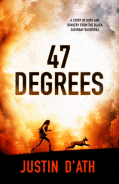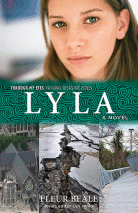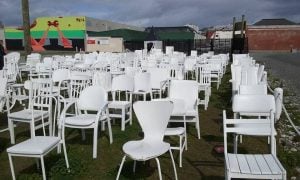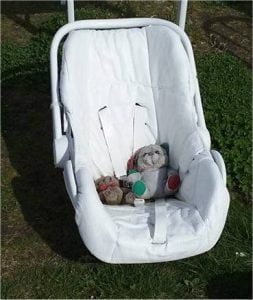
47 Degrees
47 Degrees
Justin D’Ath
Puffin, 2019
256pp., pbk., RRP $A16.99
9780143789079
Saturday, February 7, 2009 and Victoria wakes to a weather forecast of 47 degrees in Melbourne with strengthening northerly winds, part of the pattern of the previous few days as a heatwave crawls across the state. In the tiny community of Flowerdale, Zeelie’s dad is enacting the family’s bushfire survival plan to stay and defend their home even though her mum and young brother are in the Emergency Department of a Melbourne hospital because Lachy has fallen off Zeelie’s horse Rimu.
Zeelie’s not sure her dad has made the right decision but even though there is a lot of smoke in the air her dad is convinced that his precautions are just that – precautions, and wherever the fire is, they will be safe. But when Zeelie goes next door to find Atticus, the old dog they are minding for absent neighbours who has wandered home and discovers small fires already started by embers, her fear rises particularly for the welfare of her horse Rimu. And when the generator fails and there is no longer electricity for the water pumps, it is clearly time to leave… but what about Mum and Lachy and Rimu?
Based solidly on his own experiences during those Black Saturday bushfires, Justin D’Ath has woven a tale that could be the story of any one of our students or children who has experienced the very real horror of bushfires. At a time when adults are frantically busy trying to keep everyone and everything safe, and reassuring their children with what they want them to hear, there is not time to put themselves in their child’s shoes and see the events through their eyes. When her dad asks her to pack suitcases, Zeelie packs her mum’s wedding dress and evening gowns rather than the more practical things; she is angry at her mum because she has taken the vehicle with the towbar because she didn’t have enough petrol in hers so Rimu will be left to his own devices … kids focus on the details while the adults are dealing with the big picture and providing an insight into the child’s thinking and fears is what D’Ath has done so skilfully. Because he experienced many of the events that Zeelie does, the story has a unique authenticity and the reader feels the heat, smells the smoke, visualises the flames and empathises with the fear as Zeelie and her dad try all sorts of routes to get to Melbourne, only to be turned back towards the danger because even greater danger lies ahead. D’Ath deals with the less-than-happy parts sensitively, acknowledging rather than ignoring them, and helping readers deal with the fact that not all things have a sugar-coated happy ending.
As the 10th anniversary of one of this country’s greatest natural disasters when 173 people died and over 2000 homes were destroyed approaches, this is not only account of the an event that had an impact well beyond those who were caught up in it but also an insight into the what-did-happens and the what-ifs of those who have experienced similar events, providing us with an inkling of the trauma that many of our students might have faced and are still dealing with, critical as the milestone memory will generate a lot of media that could bring a wave of flashbacks and other psychological issues.
However, it is also a story of hope for them because 10 years on Justin is still able to write stories for them despite losing everything himself, and while the immediate future might be bleak, unknown and scary there is clear air coming and because Australians step up in an extraordinary way at these times, they will be OK.


